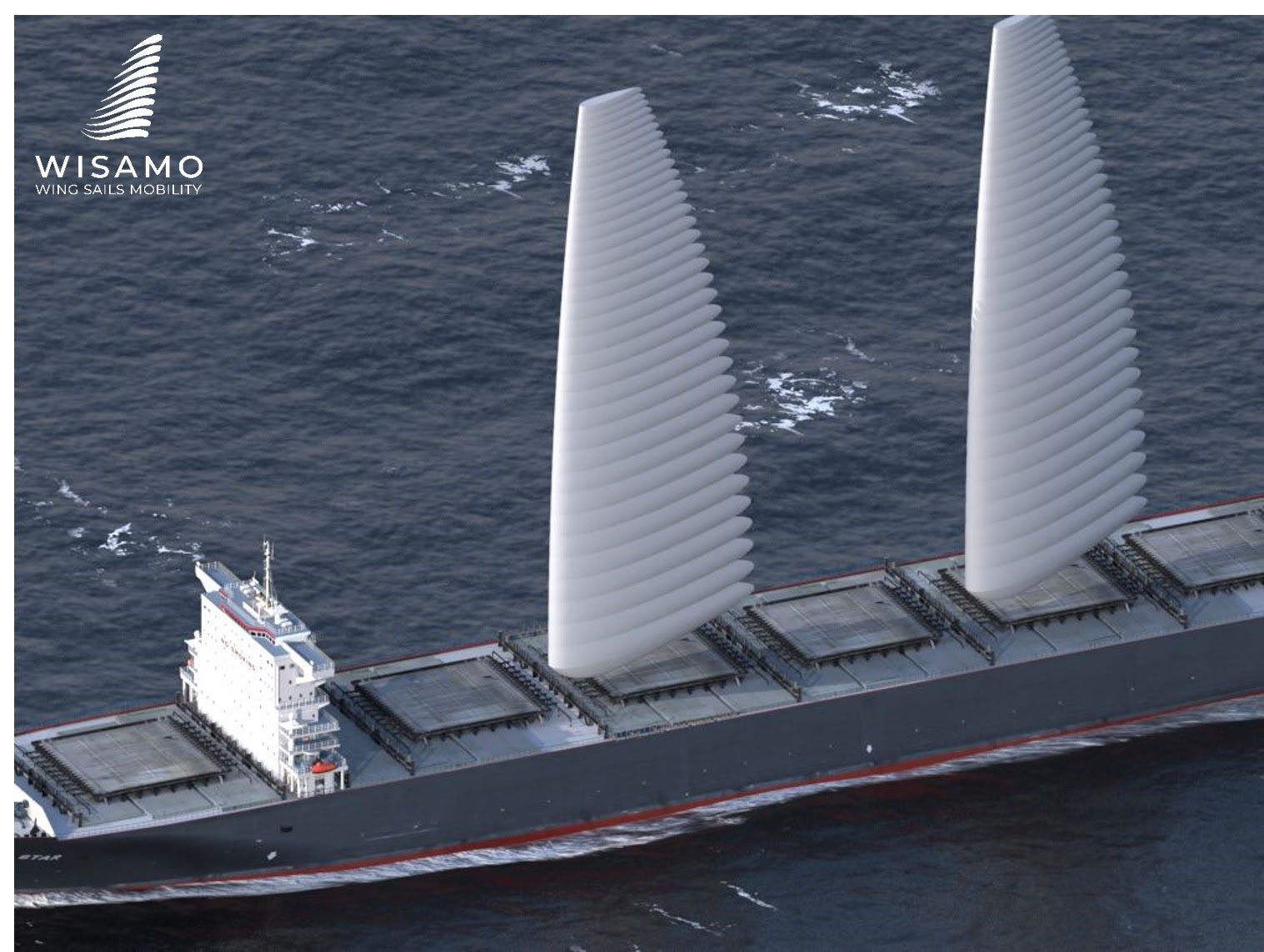Most people associate the name Michelin with tires. Or perhaps they recall the “Michelin Man”, a puffy tire-man mascot that is as synonymous with the tire manufacturer as “Mr. Clean” is to household cleaning products. To be certain, of the things that come to mind, nowhere on the list would be boat sails.
But, yes, that’s correct– the centuries-old French tire manufacturer is taking their talents to the seemingly forgotten concept of industrial-sized sailing, and they’re bringing their mascot with them.
In June, Michelin announced the development of their Wing Sail Mobility project, an inflatable cross between conventional sails and modern airplane wings. The creation looks to cut through the wind better than a sail would, while still harnessing it enough to see as much as a 20 percent improvement in fuel efficiency. When applied to large cargo ships as Michelin intends to, that kind of decrease in fuel consumption will lead to significant returns, with a difference of tens of thousands of liters being burned every day. This is a difference that could one day have a pronounced effect on global greenhouse gases, as almost 3 percent of total emissions worldwide come from the cargo shipping industry.
While the concept of sail technology has been no secret to humankind over the last six thousand years or so, this new technology is futuristic by comparison.
Michelin has gone in a different direction from its competitors with a concept that includes inflatable wings. First patented by inventors Edouard Kessi and Laurent de Kalbermatten of Switzerland, the Michelin version is a slight improvement on their prototype, with a free-standing retractable mast, asymmetrical double-skin airfoil, and fans inside the airfoil to ensure the wing’s stability is maintained in unreliable wind conditions. Additionally, the sail is fully autonomous, so there’s no need for cargo shipping companies to hire additional workers or burden existing ones with more tasks. In contrast to older sails, this prototype can effectively work even when going directly against the wind, which solves a problem that has plagued sailors for millennia.
According to Gavin Allwright, secretary of the International Windship Association, there are currently 15 active cargo ships that currently use some variation of wind-assisted propulsion technology. That number is expected to increase to around 40 ships by late 2022. But coming talks between regulatory figures in the international maritime industry could change that, with talks on the table of taxing carbon emissions on ships being among the chief motivators for companies to look into reducing their footprint. Potential tax revenue from these changes could be reinvested in the form of grants to shipping companies for the purpose of retrofitting wind propulsion technology onto their vessels. Allwright said such a program “would have a double impact on the industry.”
Michelin is far from the only company trying to figure out how to harness the wind to cut down on fuel consumption from cargo ships. MV Afros, the world’s largest bulk carrier company, uses four spinning Flettner rotors to harness the Magnus effect, which propels the ship forward while drastically cutting emissions. The Lysbris Seaways cargo ship has a pair of non-inflatable suction wings, which uses vents and internal fans to suck in air. From Airbus, their Airseas offshoot has announced plans to retrofit one of their carriers with a high-flying tow kite by the end of the year.
The most interesting of the competitors is BAR Technologies’ WindWings. Designed for use in groups of three to five depending on ship size, the WindWings operate on masts, which rotate depending on the direction of the wind. While the WindWing cannot work directly against the wind like Michelin’s inflatable sails can, the prototype can simply ‘deactivate’ the sails, allowing them to fly without harnessing any wind. Whichever new sail technology prevails, cutting out fuel is a win for shipping companies as well as the planet itself.





